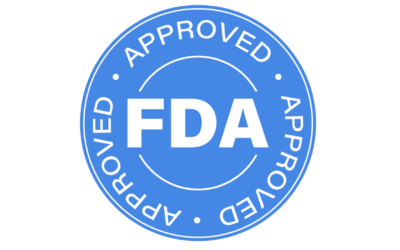Targeted Disruption: The Rise of PARP Inhibitors

The market for PARP inhibitors, a cornerstone in targeted cancer treatment, is projected to more than triple from $3 billion in 2022 to an estimated $10.3 billion by 2031. This remarkable growth at a CAGR of 14.8% signals a significant shift in oncology care and investment opportunities within the sector.
Why It Matters
With global cancer cases expected to soar to 29.5 million by 2040, the demand for innovative and effective cancer treatments has never been more urgent. PARP inhibitors offer a targeted therapeutic option for individuals with specific genetic mutations, marking a pivotal move toward personalized cancer care.
State of Play
The FDA has greenlit four PARP1 inhibitors to date: Lynparza (olaparib), Zejula (niraparib), Talzenna, and Rubraca. These treatments are not just medical breakthroughs but are also major revenue generators.
- Lynparza, a trailblazer approved in 2014 for ovarian cancer, now boasts approvals for additional indications, becoming a key revenue source for AstraZeneca and Merck & Co. with a remarkable $3 billion in 2023 sales.
- Zejula, a flagship product of GlaxoSmithKline, saw a 15% year-over-year growth in 2023, with a notable 28% spike in Q4, primarily driven by its performance in the U.S. market.
The Big Picture
The sector is marked with strategic collaborations and acquisitions, demonstrating confidence in the transformative potential of PARP inhibitors for cancer care:
- Impact Therapeutics has established a global partnership with Eikon Therapeutics to gain exposure to the PARP1 selective inhibitor IMP1734, which has entered Phase I clinical trials.
- Gilead Sciences, Inc. has acquired XinThera, a San Diego-based biotech, enhancing its oncology pipeline with access to a range of PARP1-targeted inhibitors, aligning with its strategic focus on oncology development.
- The $8.5 billion global oncology collaboration between Merck and AstraZeneca has yielded a substantial return, with Merck receiving $1.2 billion in annual revenue from the collaboration last year.
- Merck’s strategic initiatives also include a significant $169 M investment in HRS-1167, a selective PARP1-blocking drug positioned as a competitor to Lynparza and Zejula, entering an already competitive market.
Driving the News
- Results from AstraZeneca’s next-generation PARP1-selective inhibitor AZD5305 first-in-human, first-in-class trial revealed significant advantages over non-selective predecessors.
- Tilikum Therapeutics, an Oregon Health Sciences University spinout, is developing a PARP1-selective inhibitor called Pip6. Preliminary data suggests this compound shows 90x more toxicity to cancer cells than its predecessor.
- CRISPR-Cas9 screens have recently streamlined their ability to identify genes involved in the PARP inhibitor response, helping to determine patient eligibility for this treatment.
The Bottom Line
As the PARP inhibitor market rapidly expands, it heralds a new era in cancer treatment and provides opportunities for growth and innovation in the sector. Beyond their established role in oncology, PARP inhibitors also show promise for treating other diseases, such as Amyotrophic Lateral Sclerosis (ALS), and hold immense potential for versatility in the field of precision medicine.







